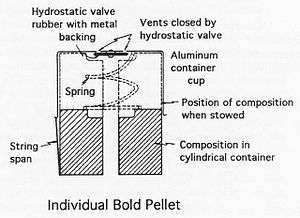Sonar decoy

A sonar decoy is a device for decoying sonar. Most are released from submarines to act as a false target.
Submarine decoys
The first submarine decoys were the German Bold fitted to U-boats of World War II. These were a pellet of calcium hydride in a simple metal container. On contact with sea water, the calcium hydride decomposed to produce a trail of hydrogen gas bubbles that acted as a bubble curtain and reflected ASDIC impulses to produce a false target. The container trapped hydrogen and floated, with a crude spring valve to maintain buoyancy to keep it at a constant depth.
Later decoys, such as Sieglinde, were motorised and could deploy their false target away from the host submarine, increasing safety.
Torpedo decoys
Decoys were also used by surface ships to decoy the developing acoustic torpedoes. These were usually towed behind the host.
Example decoys
Bubble decoys
Reflective bubble targets
Hammer and explosive decoys
These were intended to swamp the listening device with noise
- Siegmund
Signature decoys
Towed decoys
- Foxer, a British towed decoy to decoy acoustic torpedoes away from surface ships. Also used by the US as FXR and the Canadians as CAT.
- T-Mk 6 Fanfare, US development of Foxer
References
- ↑ Gannon, Robert (2009). Hellions of the Deep. Penn State Press. pp. 132–133. ISBN 0271038403.
External links
| Wikimedia Commons has media related to Sonar decoys. |
- "Sonar decoys". uboataces.com.